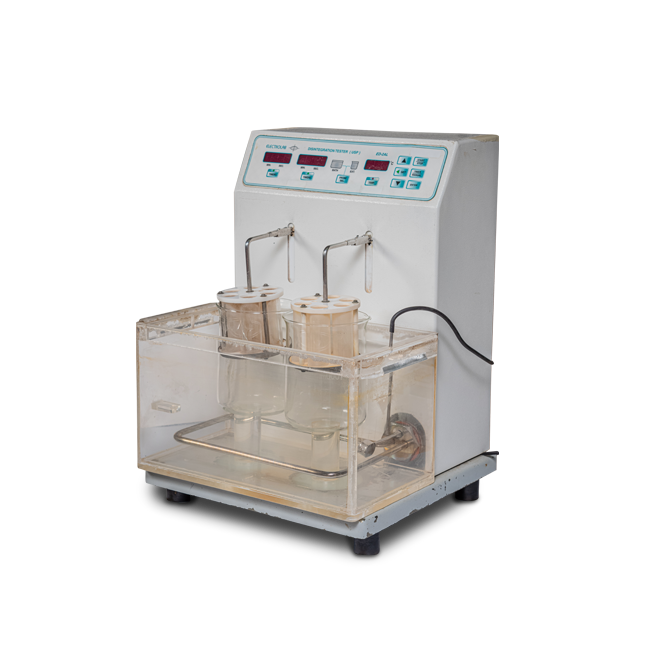
The test apparatus consists of a rack of two sets of six open-ended transparent tubes 77.5 mm long and 21.8 mm in diameter (internal) mounted between two plates and the whole arrangement is hung below a shaft which is used to attach it to a device which can raise and lower the baskets at a frequency of 29 – 32 cycles per minute with a stroke of between 50 and 60 mm. The lower ends of the tubes are covered with wire gauze which is woven in such a way as to produce a mesh of 2 mm dimension.
Each tube is also provided with a plastic disc 9.5 mm in diameter which has five 2 mm holes and 4 peripheral tapered grooves. These discs are inserted into the tubes, if this is stipulated in the relevant monograph, once a single tablet or capsule has been placed in each tube. The apparatus is then positioned in a 1 litre beaker containing the prescribed liquid (distilled water or buffer solution) which is maintained at 37±2°C and run for the time set indicated in the relevant monograph by the end of which all parts of each tablet or capsule must have passed through the mesh although bits of the tablet coating or capsule shell are permitted to remain.
For a tablet or capsule that is intended to release the drug as soon as possible after administration the dosage form must disintegrate with 15 minutes in the case of tablets and 30 minutes for both hard and soft gelatin capsules. For some tablets and capsules these times are different and are specified in the individual monographs.
If any of the dosage forms do not satisfy this requirement then the whole batch of the product has failed the test.